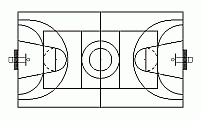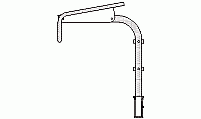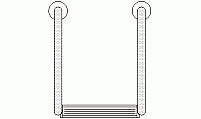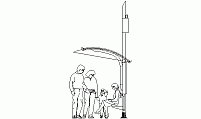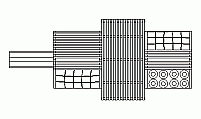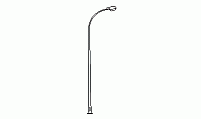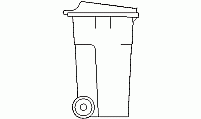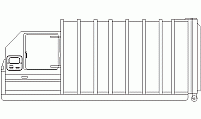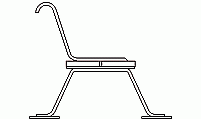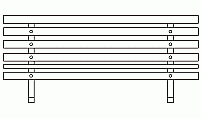CAD Blocks categories
 3D models
3D models home furniture
home furniture sanitary ware - bathrooms
sanitary ware - bathrooms professional equipment
professional equipment doors and windows
doors and windows people and animals
people and animals plants and trees
plants and trees vehicles - transports
vehicles - transports architectural details
architectural details mechanical - electrical
mechanical - electrical urban planning - civil works
urban planning - civil works safety health construction
safety health construction accessible design
accessible design drawing sheet
drawing sheet signals
signals construction machinery
construction machinery accessories and objects
accessories and objects maps and street maps
maps and street maps
Download Free Volleyball Court CAD Block in DWG Format

size: 5 kb
category: Athletic fields
related categories:
description: The image shows a detailed CAD block of a volleyball court, including the central line for the net and boundary lines. Designed for indoor and outdoor use, it adheres to official dimensions.
file extension: .dwg CAD - AutoCAD software
Detailed Overview of Volleyball Court Dimensions, and Layouts
Standard Dimensions of a Volleyball Court
The dimensions of a standard volleyball court are consistent across most countries and adhere to the regulations of the FIVB (Fédération Internationale de Volleyball). The court measures 18 meters by 9 meters (59 feet by 29.5 feet), divided into two equal halves by a net. Surrounding the court is a free zone, which varies in width depending on the competition level. Below are the details for different regions and their governing bodies:
International Standards (FIVB), USA Volleyball, Volleyball Canada, and Volleyball Australia: These organizations specify the same court dimensions: 18 meters by 9 meters (59 feet by 29.5 feet). The free zone must be at least 3 meters (9.8 feet) wide for standard play and increases to 5 meters (16.4 feet) for international competitions. Ceiling height should be a minimum of 7 meters (23 feet) but is recommended to be 12 meters (39.4 feet) for professional or advanced-level games. All courts must use elastic, non-slip surfaces to ensure player safety.
United Kingdom (British Volleyball Federation): Courts in the UK follow FIVB dimensions of 18 meters by 9 meters (59 feet by 29.5 feet), with a free zone of at least 2 meters (6.5 feet) for local games and 3 meters (9.8 feet) for higher-level matches. For international events, the free zone extends to 5 meters (16.4 feet). The recommended ceiling height is 12 meters (39.4 feet), especially for national tournaments.
Germany (Deutscher Volleyball-Verband - DVV) and France (Fédération Française de Volley - FFVolley): Both countries adopt the FIVB standard dimensions: 18 meters by 9 meters (59 feet by 29.5 feet). The free zone must measure at least 3 meters (9.8 feet) and increase to 5 meters (16.4 feet) for advanced tournaments. Ceiling height is set at a minimum of 7 meters (23 feet) but typically reaches 12 meters (39.4 feet) for professional events.
Technical Specifications for Volleyball Court Layout
The volleyball court layout includes several technical specifications to enhance gameplay and safety. The net height differs based on the category: for men’s competitions, it is set at 2.43 meters (7 feet 11 5/8 inches), while for women’s competitions, it is 2.24 meters (7 feet 4 1/8 inches). The net spans the entire width of the court and includes an additional clearance of 25-50 cm (10-20 inches) on each side, supported by flexible poles.
The court surface should be flat and free of obstructions. Indoor courts typically use polished wood or synthetic materials with anti-slip properties, while outdoor courts, often used for beach volleyball, consist of sand with a depth of at least 40 cm (15.75 inches). Proper markings are essential for the boundary and attack lines, which must be 5 cm (2 inches) wide and clearly visible. These specifications ensure the court is functional for competitive and recreational use.
Frequently Asked Questions About Volleyball Courts
- What is the recommended lighting for indoor volleyball courts?
- For recreational use, lighting should provide at least 500 lux uniformly across the court. For competitive matches, the illumination level should be at least 1500 lux to meet international standards and ensure visibility for players and spectators.
- How can acoustic issues be minimized in indoor volleyball courts?
- A proper acoustic design is essential to avoid excessive reverberation. This can include sound-absorbing materials on walls and ceilings, as well as strategic placement of acoustic panels to enhance clarity and reduce noise levels.
- What are the best materials for volleyball court flooring?
- Volleyball courts commonly use wooden parquet or synthetic materials such as PVC or polyurethane. Both options should include shock-absorbing layers to minimize injuries and enhance player performance.
- What is a "floating" structure for volleyball court flooring?
- A floating structure includes a sublayer designed to provide cushioning and absorb impacts. This system reduces stress on players' joints and enhances overall comfort during play.
- What safety features are essential for volleyball court equipment?
- Regulation-compliant adjustable net posts and protective padding around posts and court edges are crucial for safety. These features minimize risks of injury during gameplay.
- How can wear and tear be managed on volleyball courts?
- Courts should have durable, anti-slip finishes that withstand high foot traffic. Regular maintenance, such as refinishing wooden floors or replacing worn synthetic layers, ensures longevity and safety.
- What installations are necessary for player comfort and usability?
- Ventilation and climate control systems help maintain thermal comfort and prevent condensation on floors. Electrical installations, such as lighting, electronic scoreboards, and sound systems, are also essential for functionality.
- How can modern technology be integrated into volleyball courts?
- Installing Wi-Fi and other communication systems enables the use of smart devices for event management, live broadcasting, and player analytics, enhancing the overall experience.
Installation Guidelines for Volleyball Courts
Installing a volleyball court requires adherence to precise measurements and standards. For indoor courts, ensure the playing surface is level, smooth, and free from obstructions. Mark the boundary and attack lines with a width of 5 cm (2 inches). Poles must be positioned 0.5 to 1 meter (1.6 to 3.3 feet) outside the court, with padding to prevent injuries.
Outdoor courts must be prepared with a sand depth of at least 40 cm (15.75 inches) and leveled to avoid water accumulation. The net must be securely anchored, with proper tension to ensure it remains in place during gameplay. Following these guidelines ensures the court is safe and ready for use.
Customization Options for Volleyball Court CAD Blocks
The Volleyball Court CAD block can be tailored to suit specific requirements, including variations in net height, line thickness, and free zone dimensions. These adjustments are ideal for creating courts for professional competitions, recreational games, or training facilities.
Additional features like logo placements, decorative elements, or lighting designs can also be integrated into the CAD block. This flexibility ensures the court meets the functional and aesthetic needs of any project, whether indoor or outdoor.








